European Multinational Efforts
Launch Attempts by Country and Mission Type, 2022
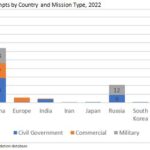
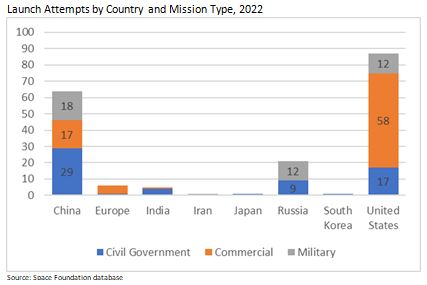
While the U.S. typically leads commercial satellite launches, China almost doubled its private missions in 2022—commercial payloads were 27% of the nation’s launches compared to 16% in 2021. Chang Guang Satellite Technology Co. launched five batches of high-resolution imagery satellites for its Jilin-1 constellation and has deployed approximately half of its planned 138 satellites.
Born from NASA Space Innovation, Digital Twin Technology Blooms Across Industries


Digital twinning is a technology with roots in the space program that’s now the beating heart of modern business, solving production, supply chain, and delivery problems before they start and giving managers unprecedented insight into operations.
Orbital Launch Attempts by Result, 2013-2022

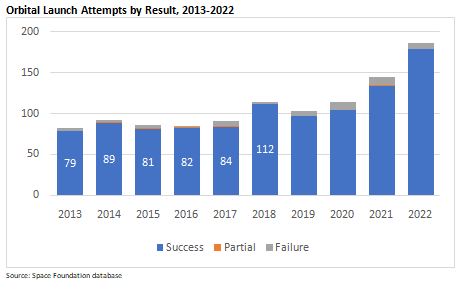
For the second consecutive year, space launches set all-time records as operators sent a historic number of 179 successful missions into orbit in 2022. With 41 more attempts than 2021, the year also set a new record for the sheer volume increase of launches year over year.
Orbital Launch Activity Grows at Record Pace in 2022

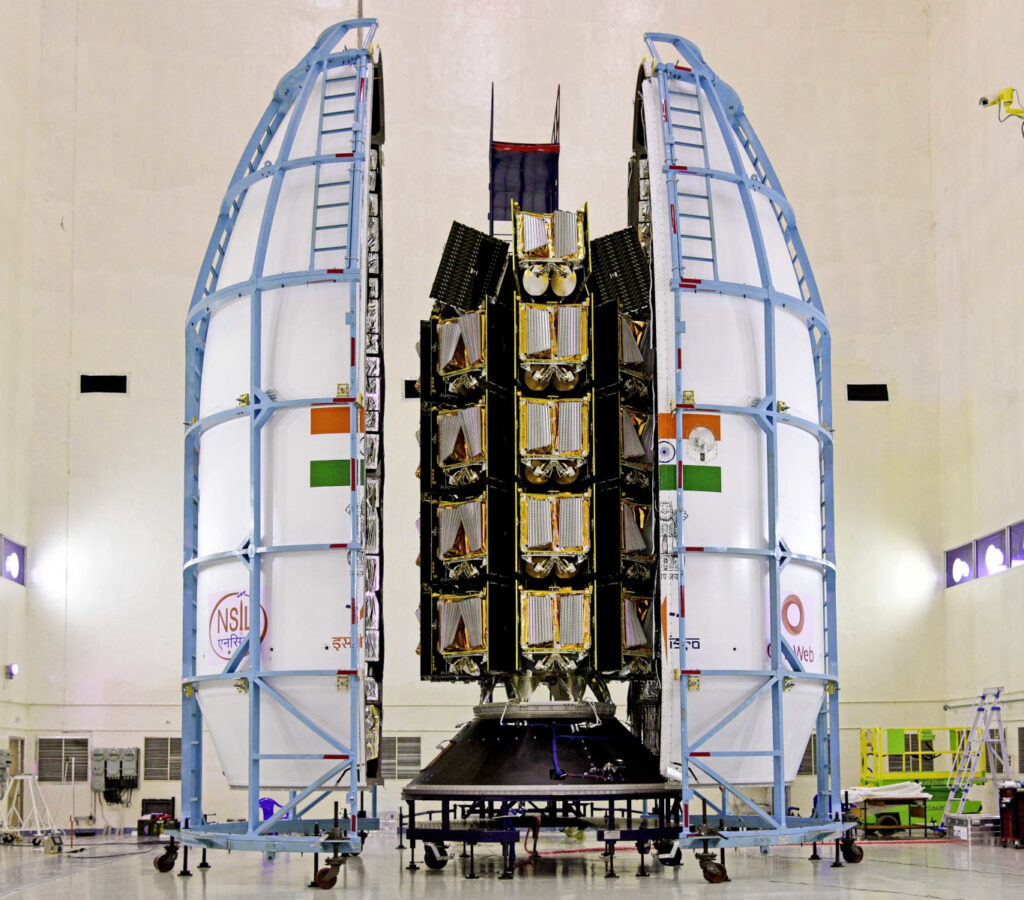
Space launch activity continued to grow rapidly in 2022, reaching a new high of 186 orbital launch attempts. Last year was filled with successes and had three fewer failures than 2021, even with 41 more attempts.
Pressure Ramps Up for New Vehicle Launches Pushed from 2022 to 2023
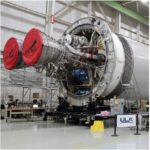
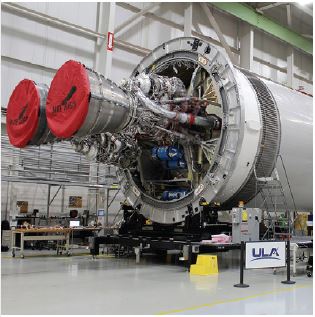
The list of launch vehicles set for maiden flights in 2023 may sound familiar. It’s mostly the same group of launch vehicles initially slated to fly in 2022.
European Space Agency Budget, 2005-2021

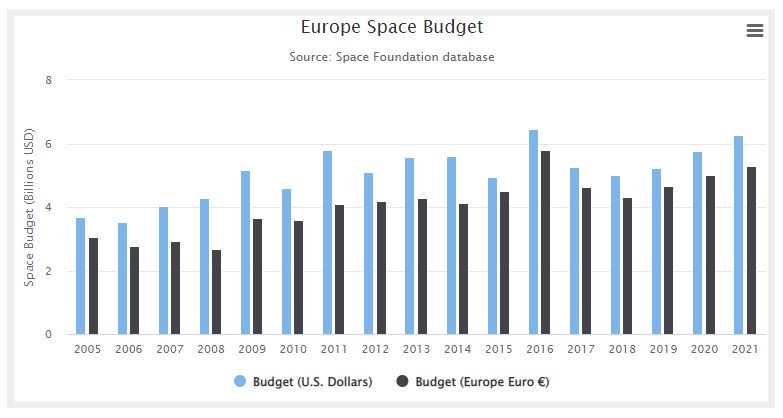
A growing share of European public investment in civil space programs is funded by the European Union under the auspices of its executive body, the European Commission (EC).
As New Solar Cycle Heats Up, Multiple Missions Explore Sun’s Mysteries
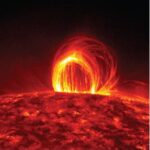
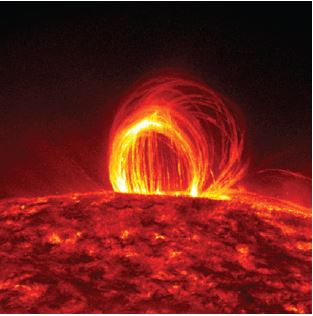
The Sun lies at the center of our solar system and sets the cycle of our daily lives, yet so much remains unknown about how it functions. As the Sun enters into a years-long phase of increasing solar eruptions, its increased activity poses risks to thousands of Earth- and space-based infrastructure assets. The increased solar activity comes as probes from NASA, ESA, and China are gathering the most advanced data ever collected about Earth’s star
Space Workforce Trends in the United States, Europe, Japan, and India, 2011-2021
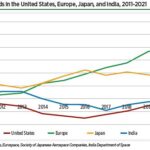
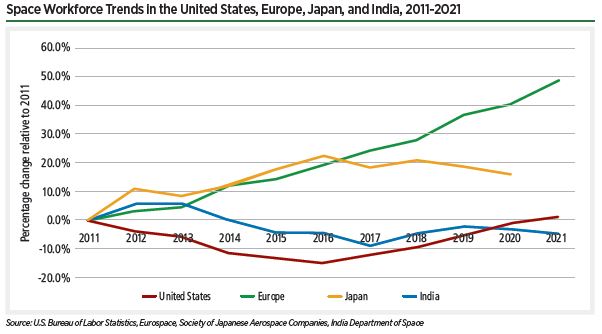
The U.S. space sector is composed of more than 198,500 individuals across private sector and government organizations. Private sector space employment continued a trend of growth that began in 2016, adding approximately 3,000 new workers from 2020 to 2021 to reach 151,797 individuals. Space manufacturing led this growth, offsetting a slight decrease in the size of the satellite telecommunications workforce.
European Space Industry Employment, 2011-2021
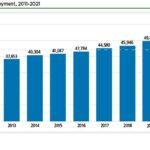
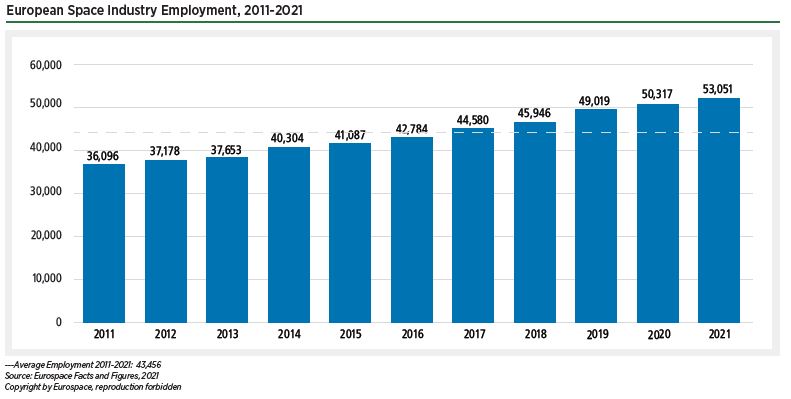
European space employment was 53,051 in 2021, an increase of 5.4% from the total of 50,317 from 2020. This estimate is based on analysis by Eurospace, the trade association of the European Space Industry. The analysis focuses on the space manufacturing industry; space services companies such as Ariane- space, SES, Eutelsat, and Inmarsat which also employ thousands of individuals, are not included.
Europe Continues to Lead in Global Workforce Job Growth

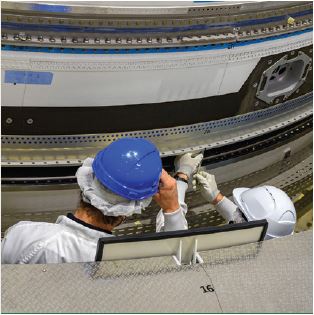
The space industry relies on skilled individuals from a wide variety of fields to enable the cutting-edge developments taking place in this sector. While many countries do not regularly produce metrics on the size of their workforce, these data are available for several major space actors, including the United States, Europe, Japan, and India.